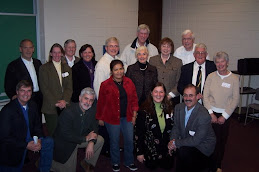 A couple months ago Cardinal George of Chicago and president of the U.S. Conference of Catholic Bishops (USCCB), announced the Vatican’s approval of a new English-language translation of the Roman Missal. It is scheduled to begin use in U.S. dioceses on Nov. 27, 2011.
A couple months ago Cardinal George of Chicago and president of the U.S. Conference of Catholic Bishops (USCCB), announced the Vatican’s approval of a new English-language translation of the Roman Missal. It is scheduled to begin use in U.S. dioceses on Nov. 27, 2011. “From that date forward, no other edition of the Roman Missal may be used in the dioceses of the United States of America” he proclaimed.
He probably didn’t mean to ban other Missals in Latin, Spanish, French, etc. Nor is it clear that George has any real power outside his own diocese. Nonetheless, the official indoctrination of the new liturgy has begun with priests and liturgists across the country. To help the faithful laity (pray, pay and obey types), an anonymous author offered some Frequently Asked Questions about the new missal.
What principles lie behind the translation of the new missal?
Primarily, the principle of personalities triumphing over policies; secondarily, the principle of centralism triumphing over collegiality.
What, then, is the primary reason for accepting the new missal?
Obedience to authority apart from narrow considerations of competence or rationality.
What can one expect to gain by accepting the new missal?
The obedience proposed above is a rich source of grace. It is precisely in this sense that the new missal will contribute to the sanctification of clergy and lay ministers.
What role did concern for the People of God play in the creation of the new missal?
The who?
What role did the teachings of the Second Vatican Council play in the creation of the new missal?
The what?
How will the new missal serve to restore a sense of mystery to the sacred liturgy?
Complicated sentence structure will make it a mystery what a pronoun might refer to, or which noun might go with the verb.
Does the new translation faithfully follow the Roman instruction on translation Liturgiam authenticam?
Yes, except when it doesn’t.
Does the new translation faithfully translate the Latin of the Missale Romanum?
Yes, except when it doesn’t.
Does the inclusion in the new translation of elements of the current translation suggest inconsistency on the part of Roman authorities?
No; it suggests, rather, the passage from truth to greater truth.
Is there a discernible pattern to the inclusion of elements of the current translation in the new translation?
The pattern of inclusion of the current translation, like the triune nature of the Godhead, lies beyond the powers of human reason but is not contrary to human reason.
What is the Holy See offering to the English-speaking churches with this new translation?
A strong apologetic for the rejected 1997/1998 sacramentary.
What attitude on the part of clergy and lay ministers will be most helpful in the implementation of the new missal?
A desire to serve the People of God by making the best of things, no matter what.
Is that last answer intended ironically?
No; it is, rather, the most serious response here given.






